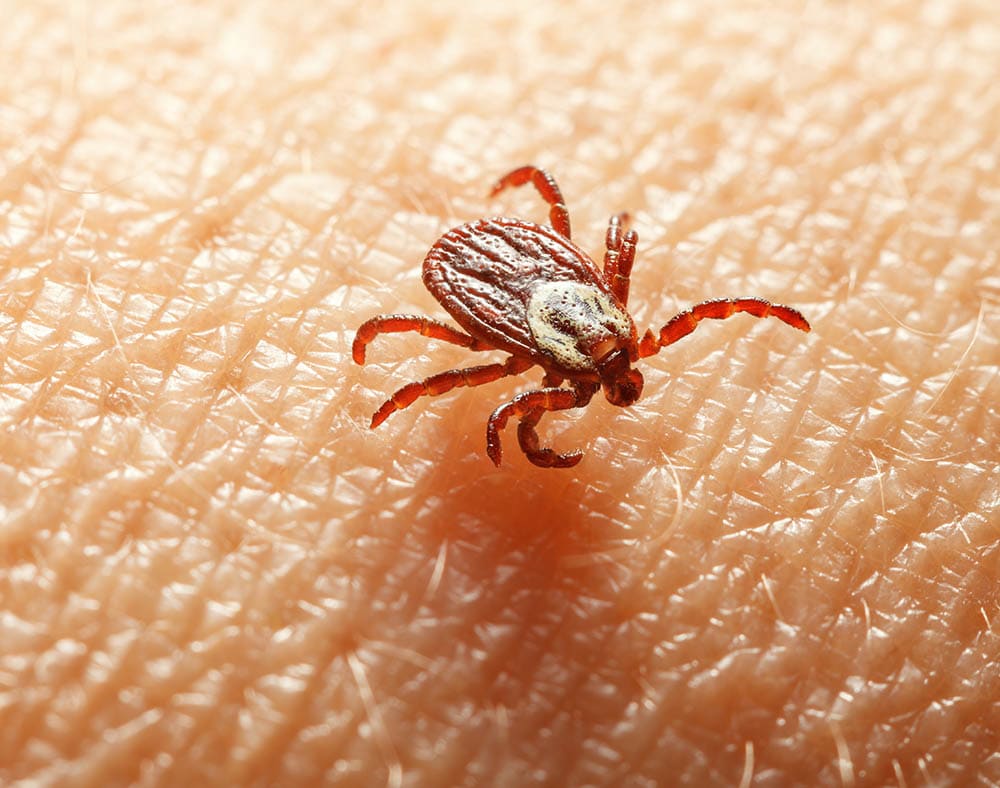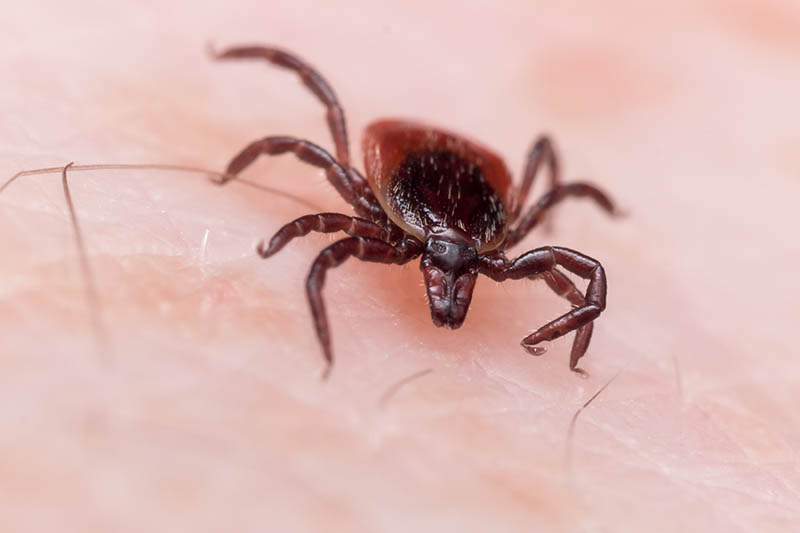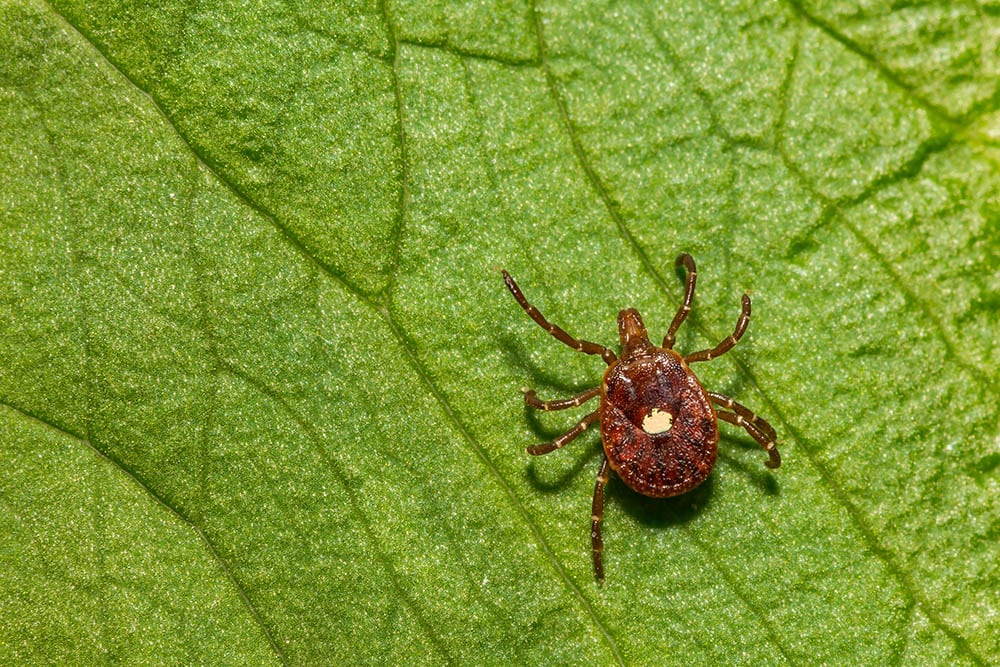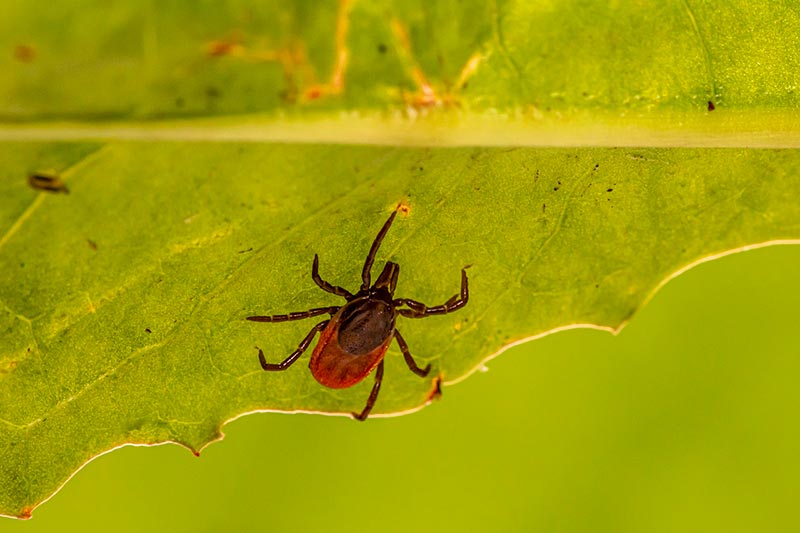4 Types of Ticks in Virginia (With Pictures)
-
Pete Ortiz
- Last updated:

Ticks are summer pests that can quickly go from annoying to dangerous. Tick-borne illnesses are on the rise across the United States, so it is important to recognize ticks, the dangers they pose, and where they are most likely to be found. Virginia is a state that has a lot of great outdoor spaces that are ideal for tick populations. Knowing where you are likely to run into ticks and knowing what the ticks look like are important pieces of information for protecting yourself from getting bit.
Here are the four most common types of tick species found in Virginia.
The 4 Types of Ticks in Virginia
1. American Dog Tick

| Scientific Name: | Dermacentor variabilis |
| Size: | 5 mm |
| Associate Diseases: | Rocky Mountain Spotted Fever, Tularemia |
The American dog tick is one of the most common ticks found in Virginia. This tick is largely found in western Virginia in and around the Blue Ridge Mountains. Adult ticks are most likely found. Adolescent ticks and nymphs are found far less frequently than adults due to their tiny size.
Adult American dog ticks have a chocolate brown color and white accents. The male features distinctive white lines that are frequently described as wavy. The females have a white shield on their backs right below their heads. American dog ticks have small, powerful mandibles. These ticks are capable of spreading a couple of nasty tick borne illnesses, including Rocky Mountain Spotted Fever and Tularemia.
As the name suggests, these ticks prefer to feed on dogs. If you have a dog that spends a lot of time outside, it is suggested to put them on flea and tick medication and to check them for ticks if they go romping through the brush. Nymphs typically feed on small rodents. Despite the preferences for other mammals, these ticks will still occasionally attach themselves to humans. The biggest threat from American dog ticks is Rocky Mountain Spotted Fever which continues to become more common in the eastern part of the United States.
2. Asian Longhorned Tick

| Scientific Name: | Haemaphysalis longicornis |
| Size: | 2-3 mm |
| Associate Diseases: | None |
The Asian long-horned tick is a new arrival to the state of Virginia. This tick is very small and was discovered in Virginia in 2018. The adult Asian long-horned tick is a solid brown color with no distinctive white markings. The Asian long-horned tick is primarily found in the western half of the state in the Blue Ridge Mountains. Some populations have also been found in pockets of northern Virginia.
One of the interesting features of this tick is that it reproduces asexually. That means that populations can grow very robustly in small areas. They do not need to travel to find mates, and that means they can build up in isolated regions. As of now, this tick is still relatively rare. It is not found in large numbers like more common ticks.
The good news is that currently, the Asian long-horned tick does not seem to carry transmittable human diseases in the United States. The ticks are still capable of carrying some diseases that affect livestock, but unless you are a farmer worried about a local population, you shouldn’t have to worry about catching anything particularly bad from these ticks.
3. Black-Legged Tick

| Scientific Name: | Ixodes scapularis |
| Size: | 2-3 mm |
| Associate Diseases: | Lyme disease, Anaplasmosis, Babesiosis |
The black-legged tick is one of the most common types of tick in the United States. It was formerly referred to as the deer tick. These names are still interchangeable. Deer ticks are prevalent in large numbers during the summer months and frequently latch onto unsuspecting humans. That is bad news because the black-legged tick is one of the most common spreaders of Lyme disease.
Lyme disease is one of the worst tick-borne diseases, and it affects thousands of people each year. In order to contract Lyme disease, an infected tick must remain attached for at least 24 hours. In many cases, it can take as long as 36 to 48 hours. That means that removing these ticks as soon as you find them is imperative to preventing Lyme disease. Lyme disease sets in when the bacteria enter the bloodstream via an attached tick.
Deer ticks have long mandibles and long legs. They take on a red appearance when they are fully grown. Some adults also appear off-white.
4. Lone Star Tick

| Scientific Name: | Amblyomma americanum |
| Size: | 5 mm |
| Associate Diseases: | Southern Tick-associated Rash Illness (STARI), Ehrlichiosis, Heartland Virus Disease, Bourbon Virus Disease, and Tularemia |
Lone star ticks are named for a distinctive white spot that appears on the back of adult females. This distinctive white spot is one of the defining identifiers for this particular species of tick. The body and legs of the tick are described as a reddish-brown color. Lone star ticks are one of the larger species of tick that top out around 5mm in size.
Lone star ticks do not carry Lyme disease, but they can carry a host of other tick-borne illnesses. They still need to be considered a threat when it comes to common tick-borne illnesses. The most noticeable disease is southern tick-associated rash illness (STARI) which creates a large red rash after a bite. Even without a threat of Lyme disease, you need to be mindful of these ticks if you are outside in wooded areas in Virginia.
These ticks can be prevalent in large numbers during the warm months. In Virginia, lone star ticks are most commonly found in the Piedmont and Coastal Plain regions.
When Are Ticks Most Active?
Ticks are generally most active during the warmest parts of the year. Ticks begin to become active during the early spring and continue through the summer. The most common months to experience tick activity are March through September. Despite that, you can get ticks year-round if you are not careful.
Tick activity is also higher during the summer because that is when most people spend time outside. Activities like hiking and camping are more common during the summer than they are during the winter. Even when people are outside during the winter, they are usually more covered up, and that helps prevent people from noticing ticks as much.
Do not let your guard down in the autumn and winter months. If you plan on spending time outside in areas where ticks are common, you need to stay vigilant even if it is cold out.
Best Ways to Avoid Ticks
The best way to avoid ticks is to avoid the areas where they are most common. Ticks commonly spend their time in wooded areas and especially in dense underbrush. Do not walk through underbrush if you can help it. If you walk through tall grass or woody plants, you run the risk of brushing up against a tick.
Another way to avoid ticks is to wear light-colored clothing. Ticks are much easier to spot on colors like white, tan, or yellow than they are on brown, black, or blue clothing. Spotting ticks on your clothes is an easy way to alert you to the fact that you are in a tick-infested area.

Remove Ticks Immediately
On the off chance you get a tick, it’s imperative to remove it immediately. Most tick-borne diseases need at least 24 hours to set in. That means the faster you find and remove a tick, the less likely you are to suffer from a tick-borne illness.
It is also important to check yourself for ticks daily if you are participating in activities that could put you at risk of getting a tick bite. If you live in a tick-infested area, you are advised to check yourself every day if you spend any amount of time outside. Ticks like to hide in dark, warm, and enclosed areas of your body. That includes the armpits, the groin, and the space around your knees, elbows, and shoulders. The best way to check yourself for ticks is in the shower when you can check over your whole body at one time.
Conclusion
If you like to spend a lot of time outside in Virginia, it is important to know what ticks look like and the dangers that they pose. This list covers all of the most common tick species and their most common diseases. Ticks are very small and are often hard to spot. It can even be difficult to know if you have been bitten because of how tiny they are. Be vigilant and educate yourself on the appearance and dangers of Virginia’s ticks.
Featured Image Credit: Ryan Hodnett, Wikimedia Commons CC SA 4.0 International
Contents


